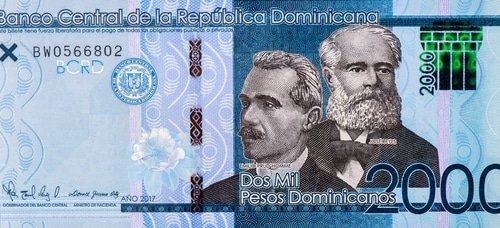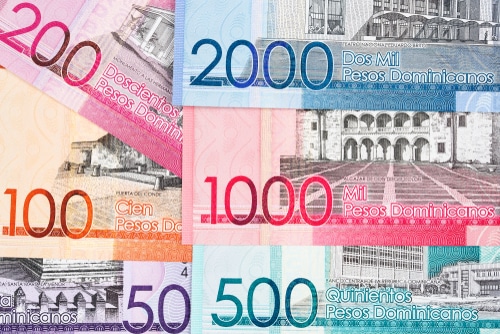If you have been to the Dominican Republic or if you have family there, you might have used the Dominican Peso (DOP) to buy food, like tostones, or dance to merengue. The Dominican Peso is used for most things in daily life in the country. But this money is also more than just a way to pay. The currency has a long history and shows important meaning for the people of the Dominican Republic.
Whether you are changing money, sending money to family, or just want to know, here are seven interesting and surprising facts about the Dominican Peso. These facts show its link to national pride, the past, and how the economy grows.
1. Locals Prefer Pesos Over Dollars For Good Reason
While many tourist places do take U.S. dollars, people who know the area and local people both say it is better to pay in Dominican Pesos. If prices are in USD, they are usually higher. You will likely get more for your money if you pay with the local money.
You can change your money at banks or use an ATM when you get there. If you have pesos left at the end of your trip, you can trade them back at most banks in the Dominican Republic.
2. The Country Once Used the U.S. Dollar
Though the Dominican Republic introduced its own peso after gaining independence in 1844, it switched to the U.S. dollar in 1904 because of economic pressures. The peso came back in 1937 as the “peso oro” (golden peso). At that time, it was first tied to the gold standard and then pegged to the dollar.
Since 1963, the country has used a fiat currency. This means its value is not tied to gold or any other physical thing. Now, it is officially called the peso dominicano.
3. The 1,000-Peso Note Features a Historic Mansion
The Alcázar de Colón stands out on the 1,000-peso banknote. This place was built in the early 1500s by Diego Colón, who was the son of Christopher Columbus. It is one of the oldest buildings made in the European style in the Americas. Today, it is a museum in Santo Domingo’s Ciudad Colonial, which is a UNESCO World Heritage Site.

4. The Oldest Cathedral in the Americas Is on the 50-Peso Note
On the 50-peso note, there is a picture of the Basilica Cathedral of Santa María la Menor. This is the first Christian church built in the Americas. It was finished in 1541. The church shows the Dominican Republic’s colonial past and its deep religious roots.
This Gothic-style cathedral is in the Ciudad Colonial area. It is not far from the Alcázar de Colón, and you can get there with a short walk.
5. The 100-Peso Note Honors the Country’s Founding Fathers
The 100-peso bill shows the faces of three national heroes. Juan Pablo Duarte, Ramón Matías Mella, and Francisco del Rosario Sánchez are on it. They were the people who started the fight for freedom against Haiti. These men made La Trinitaria, which was a secret group. This group helped bring back the Dominican Republic’s freedom in the year 1844.
Today, people know them as the Fathers of the Nation. What they did stays with us, kept safe in the Altar de la Patria in Santo Domingo.
6. Resistance Fighters Are Celebrated on the 200-Peso Note
The story of the Mirabal Sisters—Patria, Minerva, María Teresa, and Dedé—is one that touches many people. In the 1950s, they stood against the rule of Rafael Trujillo. Not many stories are as strong as theirs.
After three of the sisters were killed, they came to stand for courage and not giving up. You can see their pictures on the 200-peso note. A monument that shows their bravery is on the back of the note.
7. The Peso Reflects a Growing Caribbean Economy
The Dominican Republic has one of the largest economies in the Caribbean. The country gets most of its money from tourism, farming, and trading, mainly with the United States. The peso is key to this progress and gives stability with money. People use it for daily buying, business with other countries, and sending money to family.
Whether you shop for groceries or send money by Remitly, the Dominican Peso is the main currency in the country. It helps families, their loved ones, and communities all over the island.
Sending Money to the Dominican Republic?
If you live in another country and help loved ones back home, Remitly lets you send Dominican Pesos quickly and safely. You can send money straight to banks, cash pickup spots, or even have it sent right to their door. The exchange rates and fees are low, so it is easy to use and good for people who want to stay connected with their family or friends.
Frequently Asked Questions About the Dominican Peso (DOP)
What is the currency of the Dominican Republic?
The official currency is the Dominican Peso, abbreviated as DOP, and often represented with the dollar sign ($).
Can I use U.S. dollars in the Dominican Republic?
Yes, in tourist-heavy areas, but you’ll usually get better value paying in pesos, as prices listed in dollars are often higher.
Where can I exchange foreign currency into pesos?
You can exchange money at banks, ATMs, or authorized exchange offices throughout the country. ATMs often offer competitive rates.
What denominations of Dominican currency are in use?
- Coins: 1, 5, 10, and 25 pesos
- Banknotes: 50, 100, 200, 500, 1,000, and 2,000 pesos
Who are the people featured on Dominican peso banknotes?
Notable figures include the Mirabal Sisters on the 200-peso note, the founding fathers on the 100-peso, and historical landmarks like the Alcázar de Colón and Cathedral of Santa María la Menor on other bills.
Is the Dominican Peso a stable currency?
The DOP is considered relatively stable for the region, supported by the Dominican Republic’s growing economy and strong tourism and trade ties.
